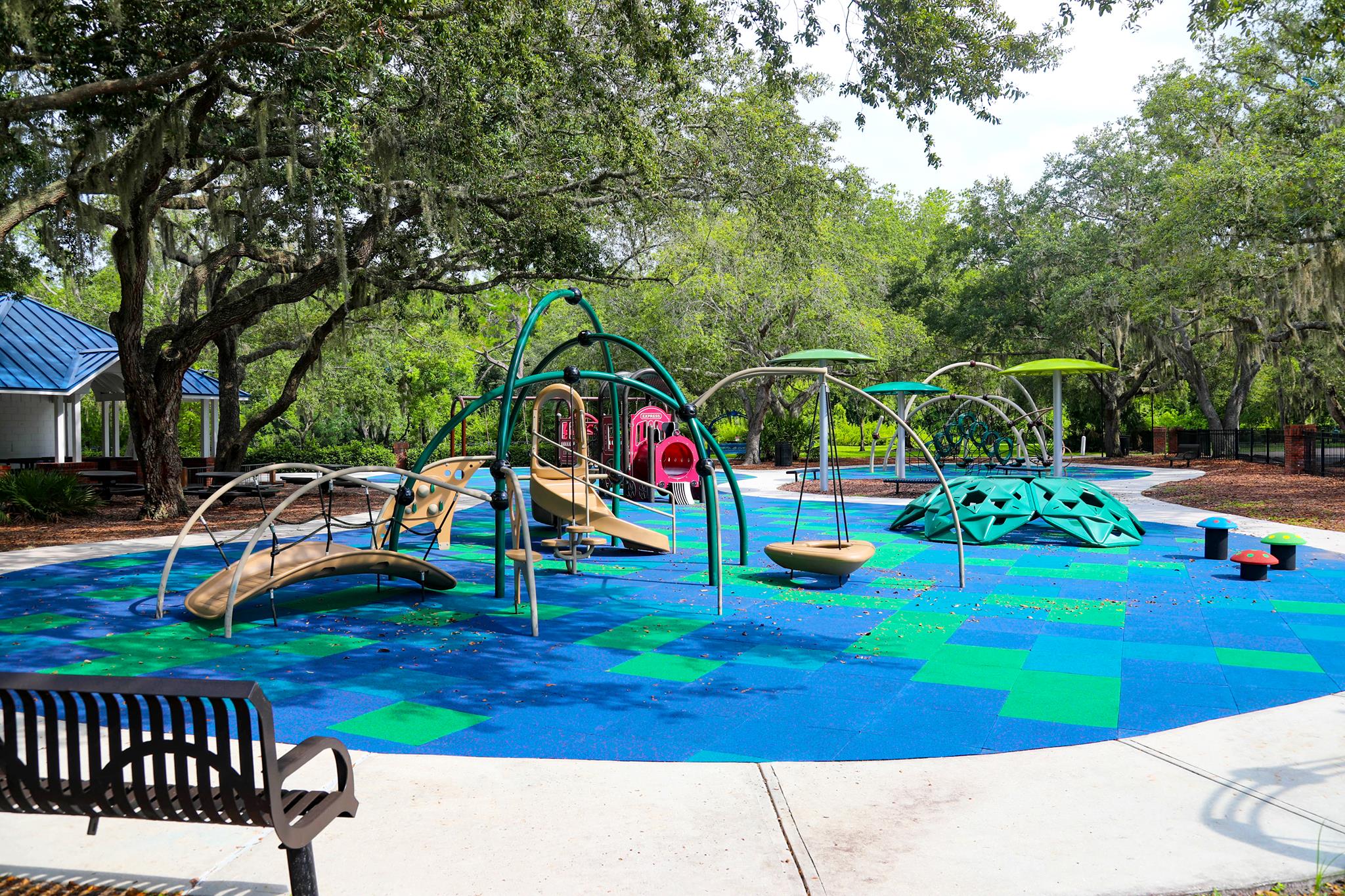Just as there are many types of playgrounds, there are also several types of coatings for the playground floor. Each with particular properties that fulfill specific functions. Perhaps the coating is not the first element when designing a playground, or it is thought that it is not very useful. Still, the coatings on the surfaces fulfill essential functions for the safety of children. These coatings cushion falls and helps to prevent serious injuries; that is why they must be durable and made with shock-absorbing materials. Next are some of the most common surfaces in playgrounds.
Wood chips
Wood chips are usually used under equipment in playgrounds or gardens; they are generally low cost and easy to purchase and install but have many limitations. First, they must be made of wood that has not been treated with chrome-plated copper arsenate. There must be a minimum depth of nine inches of wood chips to prevent compaction and displacement by movement or wind. They must be continuously monitored to prevent spreading and losing their function.
Sand
In the same way as wood chips, sand is a material that is easy to install and very cheap, it is also easy to maintain, and children love to play in it. The disadvantage of sand is that it is not a material that cushions high falls and can hide dangerous objects such as broken glass or sharp metal. Moreover, children can get scratches from rubbing. It is best to install a sandbox so children can play but not use it directly as a lining.
Gravel
The gravel is small rounded stones used to cover paths and other spaces. Gravel is not a recommended coating for playgrounds as it is not an adequate shock-absorbing surface. Children can throw these stones at each other and get injured, or even put gravel in their mouths and choke or swallow them. The advantage is low cost, but the risks that come with it do not justify saving money.
Synthetic grass
Synthetic turf is popular on athletic fields, soccer, and various sports but is also used in playgrounds. It is made up of rubber sheets and artificial grass. Among its advantages is that it is a fixed covering and does not move; it also has a specific damping capacity. When it is very hot and sunny, artificial grass heats up, sometimes preventing you from walking on it. Among its limitations, synthetic grass must be disinfected periodically. Another disadvantage is that it does not have a variety of colours and designs.
Rubber Surfacing
The rubber surfacing is a very suitable coating for playgrounds since it is very versatile as it comes in different presentations, either in the form of tiles or poured on site. It helps the environment by using recycled rubber in its manufacture. This coating protects children from blows, falls, scratches, and injuries. It is also highly decorative since it can combine patterns and colours to make the playground a beautiful place for children and adults. In addition, maintenance is simple, and it is a highly durable product. Therefore, it is the ideal option for playground floors.
What do you think about this topic? Which one do you think is the better option for playgrounds?
If you want to know more about the surfaces of playgrounds, contact us privately by visiting the following link.
